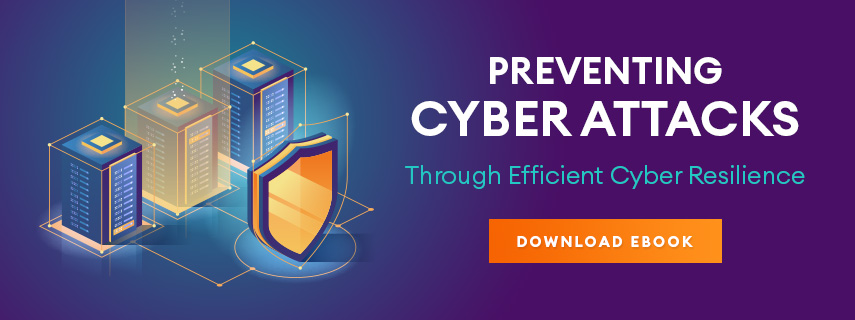What you Need to Know About Securing your Data against Cyber Attacks

Recommended Best Practices to Protect Yourself from Biggest Threats
Businesses of all sizes are realizing that the threat of a cyber-attack is no longer an “if” but a “when,” as more than half of U.S. businesses suffered a cyber-attack in the past year. Properly protecting your data is necessary for business survival, especially in today’s hyper-connected world. Everyone uses the internet constantly, and without preparation, your information is at risk of hacking or phishing attacks. Fortunately, you can protect yourself and your data from malicious activity with the right precautions. Let’s break down some of the biggest threats you face, and best practices for deterring them.
Backup 3-2-1 Rule
Many people don’t realize the importance of backing up their data until it’s too late. This issue is so destructive that an industry study by The Diffusion Group found that 60 percent of companies that lose their data to an attack fold within six months of the attack. The Backup 3-2-1 Rule is a good practice to follow if you want your business to avoid a similar outcome.
- Maintain three copies of your data — two isn’t enough if it’s important.
- Save data in two different formats, for example:1. Hard drive and memory stick2. Dropbox and burned DVD
- Have one off-site backup: two physical backups and one in the cloud.
Following this rule of thumb for proper backup is easier than you’d think, and certainly worth the small amount of extra time. Duplicating your data at least three times and across multiple formats can save you and your business many thousands of dollars in recovery costs, not to mention many millions in lost business, brand reputation, and potential regulatory fines. The same goes for securing your backed-up data off-premises. Though “the cloud” may sound daunting if you’re not a Fortune 500 company, CEO Mark Hurd explains that the cloud enables “small companies to scale up faster than would have been possible a decade ago”—without data centres or IT staff. Using cloud-based applications and data storage solutions can provide optimal security and increased accessibility, and can even reduce your IT expenses.
Hacking Disaster – WannaCry Ransomware Attack
Current technologies have led to the creation of diverse and increasingly sophisticated methods for uncovering private information. One of the most recent hacking disasters was 2017’s WannaCry ransomware attack, drawing worldwide attention to ransomware’s dangerous potential. By locking users out of their devices and holding personal or professional data “ransom” unless hostage-like demands are met within a specific period of time, WannaCry left businesses with only one copy of their data no chance to recover. In 2016 alone, ransomware was estimated to have cost businesses $1 billion, which further emphasizes the importance of not only backing up information, but regularly testing your data-recovery process as well. You certainly wouldn’t want your backup drive to run out of disk space without anyone noticing.
Phishing Scams
Ransomware can come is various forms, but phishing is the leading method leveraged by today’s hackers. This widespread and potentially devastating tactic is as old as the World Wide Web, and it’s grown increasingly sophisticated over time. Typically delivered as an urgent email, chat message, web ad, or a website designed to impersonate a genuine system or trusted organization, phishing attempts to trick its victims into clicking a malicious link or downloading an attachment. To best protect yourself from phishing scams, there are a few recommended best practices:
- Never click on links in random emails or chats. If you receive a message with a link you think you need to click, hover over it beforehand to make sure it leads where it says it will.
- Make sure you know who’s sent you something. Some senders try to disguise their emails as legitimate senders, but you can check the “from” field to see who’s really behind that email.
- Keep an eye on online accounts. Regularly logging into your online accounts, even the ones you don’t often use, is imperative for catching any bank or credit card phishing scams in the works.
- Phishing attacks often exploit web browser security loopholes to exploit. Ignoring notifications to update your browser can leave you with vulnerable security holes. Stop clicking “remind me later” and update!
Protect your Data Before it is Hacked
A recent Juniper Research study estimates that cybercrime will cost businesses $2.1 trillion globally by 2019. Data is the lifeblood of modern businesses, and losing it to a hacker can cause irreversible damage. You should back up and secure everything you possibly can, even if you don’t think the data you possess is important enough to be hacked. Don’t wait another day to secure your data. Protecting yourself and your information now will be much easier and less expensive than recovering it after you’ve been hacked!
Download the latest eBook on How to Prevent Cyber Attacks through Efficient Cyber Resilience and Learn how better data protection leads to greater cost savings.
to Contact Us




